Table of Contents
Introduction
When you hear the word “desert,” vast stretches of golden sand dunes probably come to mind. But India, with its rich geographical diversity, has a fascinating twist: cold deserts. Tucked away in the lap of the Himalayas, cold deserts in India offer surreal landscapes, a distinct culture, and thrilling adventures—all wrapped in crisp mountain air and silent serenity. If you’re craving a unique travel experience that’s far from the ordinary, it’s time to explore the frozen wilderness of Ladakh, Spiti Valley, and Nubra Valley.
What Are Cold Deserts in india?
Cold deserts are dry areas that get less rainfall, temperatures fall under the cold in winter and remain relatively calm even in the summer. Unlike hot deserts, they are found at high altitude and often covered with snow most of the year. In India, the most famous cold deserts in india are located in the center of Ladakh and the northern regions of the Himachal Pradesh.
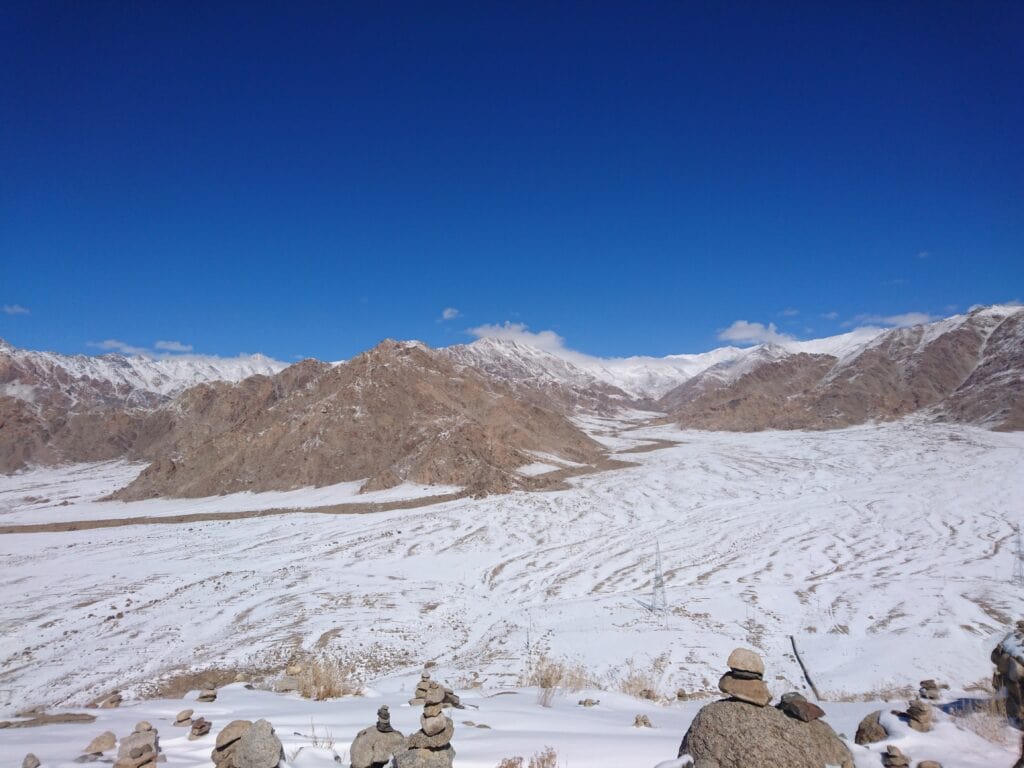
Famous Cold Deserts in India
1.Ladakh – The Roof of the World
Sitting over 11,000 feet above sea level, Ladakh is a crown jewel among the cold deserts in India. Imagine dramatic mountains, crystal-clear lakes like Pangong Tso and Tso Moriri, and centuries-old monasteries, all set beneath a brilliant blue sky. Ladakh is where nature’s grandeur, rich culture, and thrilling adventure converge at high altitude, offering a unique experience for explorers and culture seekers alike. It’s a destination where every corner reveals awe-inspiring landscapes and timeless traditions.
Highlights:
- Pangong Tso & Tso Moriri: High-altitude lakes that change hues with the sunlight.
- Leh Monasteries: Hemis, Thiksey, and Diskit offer spiritual solace amidst dramatic backdrops.
- Khardung La: One of the highest motorable roads in the world.
- Zanskar Valley: Ideal for trekking, river rafting, and experiencing isolated Buddhist culture.
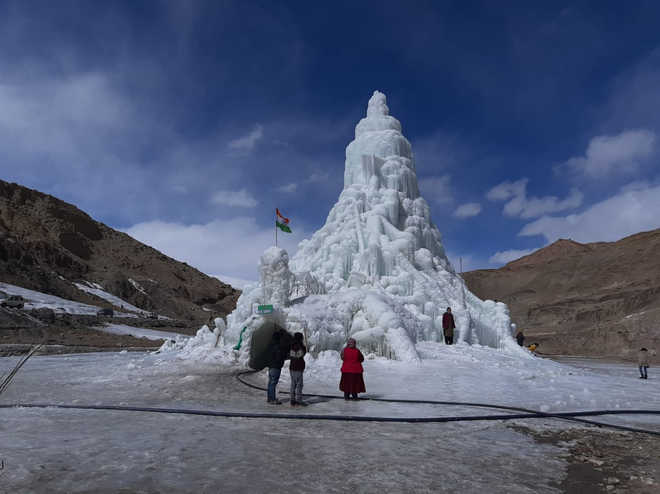
Adventure Activities:
- Biking on the World’s Highest Motorable Roads: Ride your bike through the thrilling and challenging Khardung La, the world’s highest motorable road, offering unparalleled views of Ladakh’s rugged beauty and a true test of biking endurance.
- Trekking Along the Markha Valley & Chadar Trek: Discover the majestic Markha Valley trek, where you’ll navigate narrow gorges and high-altitude terrain, or challenge yourself with the Chadar Trek—a once-in-a-lifetime winter adventure across a frozen river in Zanskar.
- Camping Beside Lakes: Set up camp by the serene lakes like Pangong Tso or Tso Moriri, where the still waters reflect the towering mountains around them, offering a peaceful escape and an immersive nature experience.skies.
2.Spiti Valley: The Middle Land of Mystics
Often called “Little Tibet,” Spiti Valley is a remote and mystical sanctuary nestled between India and Tibet. The landscape here is deeply spiritual, featuring whitewashed villages, centuries-old gompas, and winding roads that test your grit while fueling your sense of adventure. This high-altitude region offers a unique blend of rugged beauty and rich cultural heritage, making it a captivating destination for those seeking peace, exploration, and a deeper connection with Tibetan Buddhist traditions.
Highlights:
- Key Monastery: A 1,000-year-old Buddhist learning center with panoramic views.
- Chandratal Lake: A crescent-shaped gem surrounded by towering peaks.
- Dhankar & Tabo Monasteries: Some of the oldest monastic complexes in the world.
- Pin Valley National Park: A sanctuary for snow leopards and Himalayan wildlife.
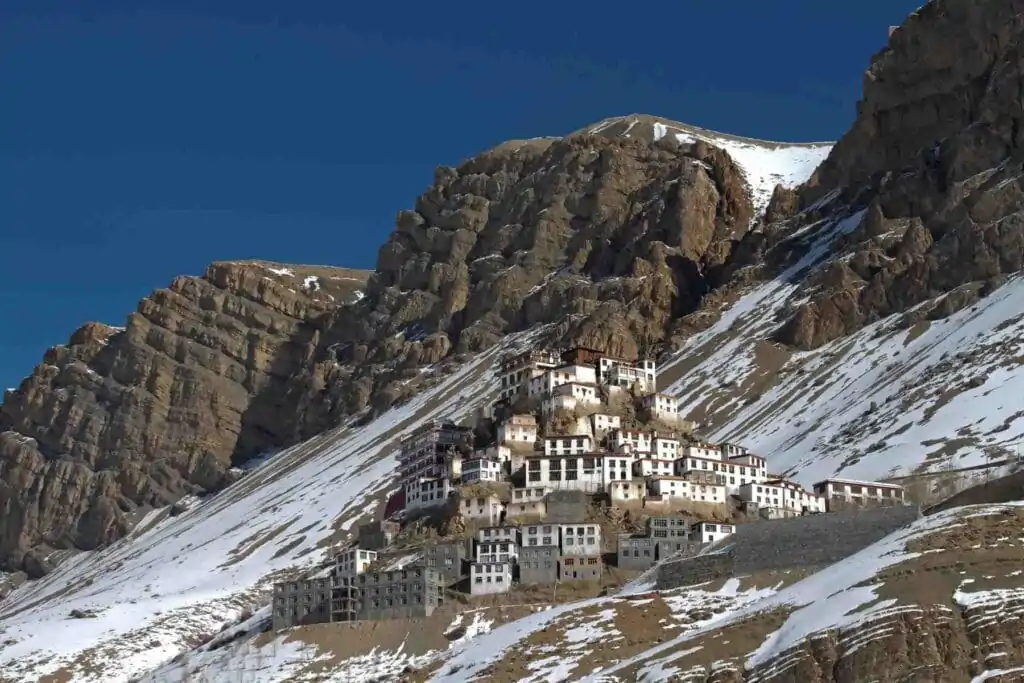
Adventure Activities:
- High-altitude Trekking: Embark on an unforgettable trek to Dhankar Lake or Pin Valley National Park in Spiti Valley, where you’ll traverse rugged terrain and immerse yourself in the pristine beauty of these remote, high-altitude landscapes.
- Biking Routes through Kunzum Pass: Tackle the challenging yet scenic Kunzum Pass, a popular route for adventurous bikers, offering panoramic views of the Himalayas and the unique terrain of Ladakh and Spiti Valley.
- Stargazing: Experience the magic of stargazing under some of the clearest night skies in India, especially in regions like Nubra Valley and Spiti Valley, where the lack of light pollution allows the stars to shine brighter than ever.
3. Nubra Valley – The Desert of Double Humped Camels
A breathtaking detour from Leh, Nubra Valley is where desert meets snow-capped peaks, offering a surreal landscape like no other. Known for its white sand dunes and Bactrian camels, this cold desert in Ladakh is a striking blend of rugged terrain and soft, sandy expanses.
Often called the “Valley of Flowers,” Nubra harmonizes nature’s extremes, with stark desert vistas contrasting against majestic, snow-covered mountains. It’s a destination that promises an unforgettable adventure, combining natural beauty, cultural richness, and serene tranquility—a must-visit for anyone exploring Ladakh.
Highlights:
- Hunder Sand Dunes: Ride a camel across a snow-capped desert.
- Diskit Monastery: Overlooks the valley with a giant Maitreya Buddha statue.
- Turtuk Village: The last Indian village before the Pakistan border—home to the Balti culture.
- Yarab Tso: A hidden sacred lake, perfect for peaceful reflection.re.
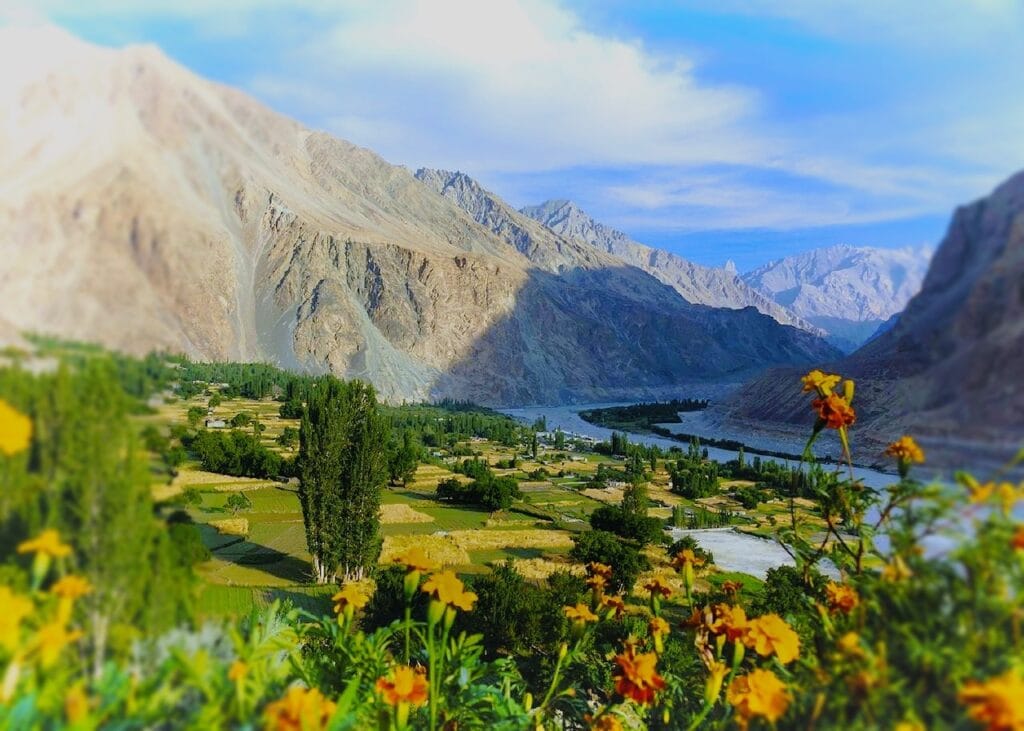
Adventure Activities:
- Camel Safaris: Ride across the iconic sand dunes of Nubra Valley on Bactrian camels, offering a unique and unforgettable desert experience.
- Off-road Biking & Jeep Safaris: Explore Ladakh’s rugged terrain and high-altitude mountain passes like Khardung La on an off-road bike or jeep, an adventure that tests your skills and promises breathtaking views.
- River Crossing & Short Treks: Conquer river crossings and embark on short treks in remote areas like Chandratal or Spiti Valley, immersing yourself in the wild beauty and serenity of the cold desert regions.
Climate and Best Time to Visit
The cold deserts in India experience extreme temperatures—cold winters with snowfall and relatively dry, pleasant summers.
- Best Time to Visit: May to September is ideal when roads are open and the weather is friendly.
- Winter Visits (December to February): Recommended only for experienced adventurers prepared for freezing temperatures and limited accessibility.
Travel Tips for Cold Desert Adventures
- Acclimatization is key: Spend 1-2 days resting after reaching high altitudes.
- Pack wisely: Carry layers, sunscreen, lip balm, sunglasses, and essentials like cash and medicines.
- Connectivity: Internet and mobile networks can be patchy. BSNL and Jio have better coverage in remote areas.
- Vehicle prep: For road trips or bike rides, ensure your vehicle is in top condition and carry extra fuel.
Where to Stay in the Cold Deserts in India
1. Ladakh (Leh)
- The Grand Dragon Ladakh (Leh): A luxurious stay with stunning views of the mountains and excellent service.
- Shanti Guest House (Leh): Budget-friendly, clean, and simple accommodation with a homely feel.
- Lama’s Place: A family-run guesthouse known for its warm hospitality and peaceful setting.
- Pangong Lake Camps: Enjoy glamping with tents overlooking the stunning lake. A perfect spot for sunrise and sunset views.
- Nubra Valley Camping: Several campsites in Hunder offer an authentic desert experience with double-humped camel rides and campfire nights.
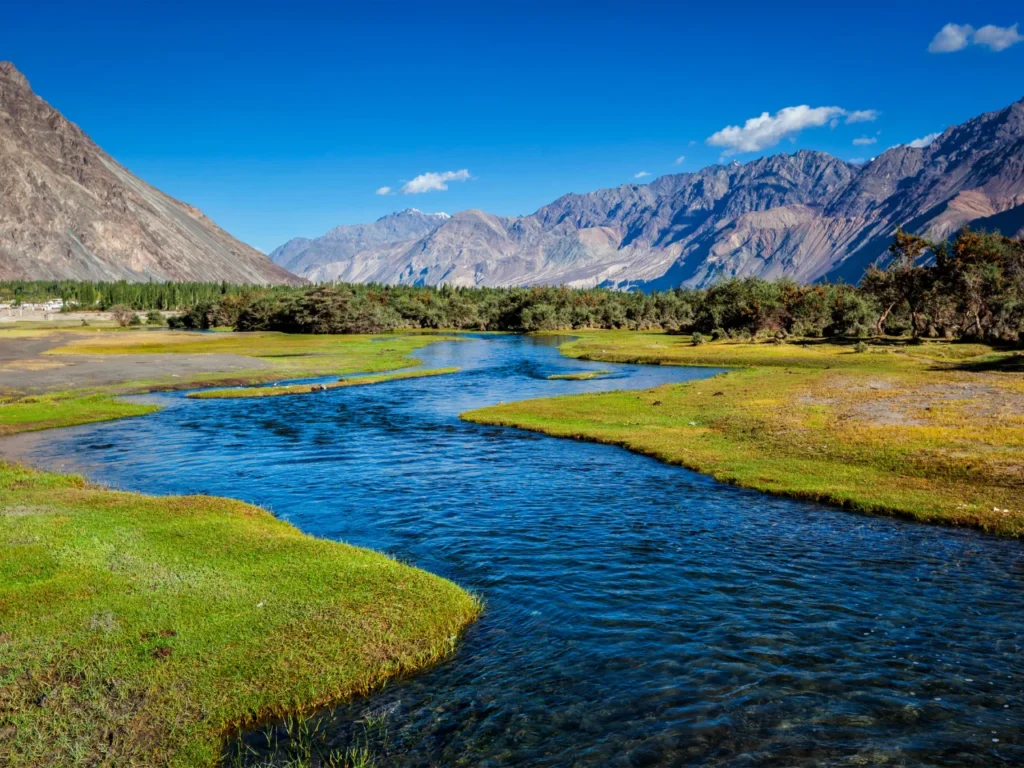
2.Spiti Valley
- Spiti Valley Homestay (Kaza): Warm hospitality in the heart of the valley with a chance to experience the local lifestyle.
- Tashi Dhondup’s Homestay (Kaza): A great spot for those seeking a personal touch with clean rooms and local meals.
- Key Monastery Guesthouse: If you’re looking to stay close to the famous Key Monastery, this guesthouse offers simplicity and stunning views.
- Chandratal Lake Camps: This high-altitude lake offers camping opportunities with a surreal backdrop. Enjoy the quiet serenity of the valley under the stars.
- Pin Valley National Park Camps: A more remote camping experience for those looking to explore the unspoiled wilderness of Spiti.
3.Nubra Valley
- Desert Himalayan Resort (Nubra Valley): Located in Hunder, this resort offers a luxurious stay with views of the sand dunes and mountain ranges.
- Nubra Valley Homestay: Traditional homestays where you can enjoy authentic Ladakhi meals and local hospitality.
- Silk Route Residency (Diskit): A comfortable stay with modern amenities and easy access to local attractions.
- Hunder Sand Dunes Camps: Spend the night in a luxury tent surrounded by the unique sand dunes of Nubra, and experience a camel safari during the day.
- Nubra Valley Eco Camps: Eco-friendly campsites located in beautiful, secluded spots where you can enjoy the natural surroundings.
Responsible Tourism in Cold Deserts
These fragile ecosystems demand respect. When exploring the cold deserts in India, follow these principles:
- Leave no trace: Carry back all waste, including biodegradable items.
- Respect local customs: Seek permission before photographing people or entering sacred spaces.
- Support local economy: Stay in homestays, buy handmade crafts, and hire local guides.
- Water conservation: Water is scarce—use it judiciously, especially in Spiti and Nubra.
Conclusion
The cold deserts in India are not just destinations—they are transformative experiences. They challenge you, ground you, and offer a perspective like no other. Whether you’re trekking through barren trails, listening to the chants echoing from a cliffside monastery, or just gazing at an endless starry sky—these lands leave you spellbound.
So pack your bags, brave the altitude, and set out to explore India’s cold deserts—where silence speaks, and every path leads to awe.


